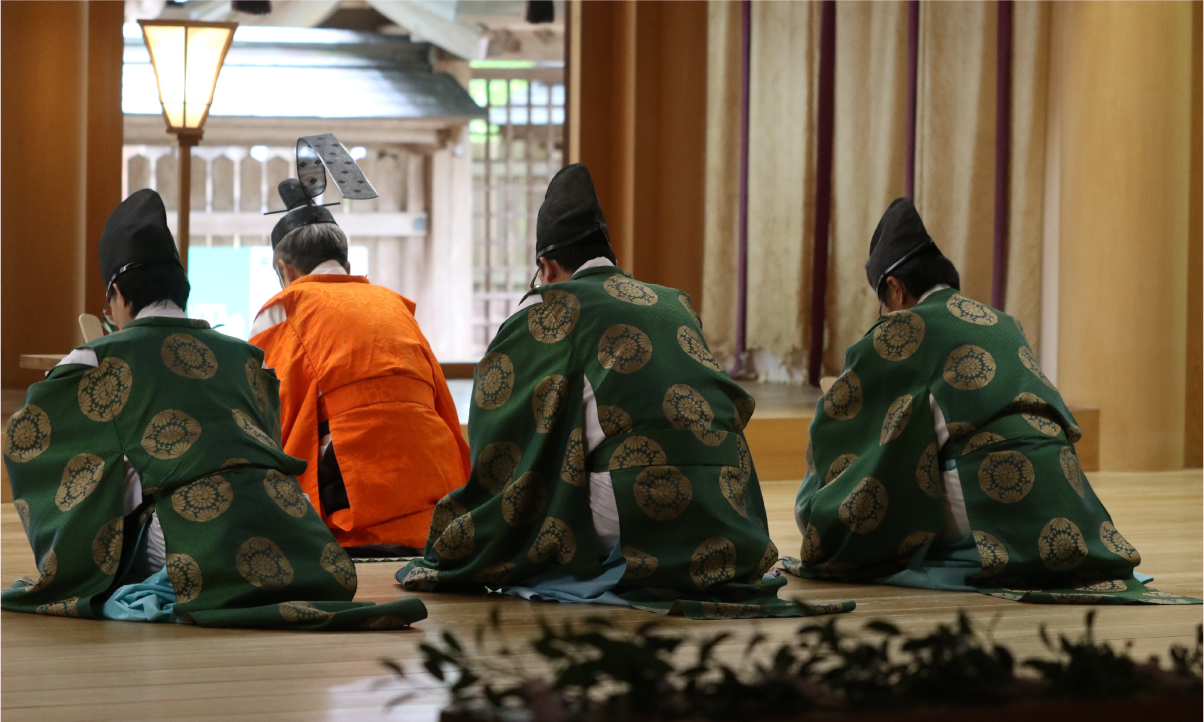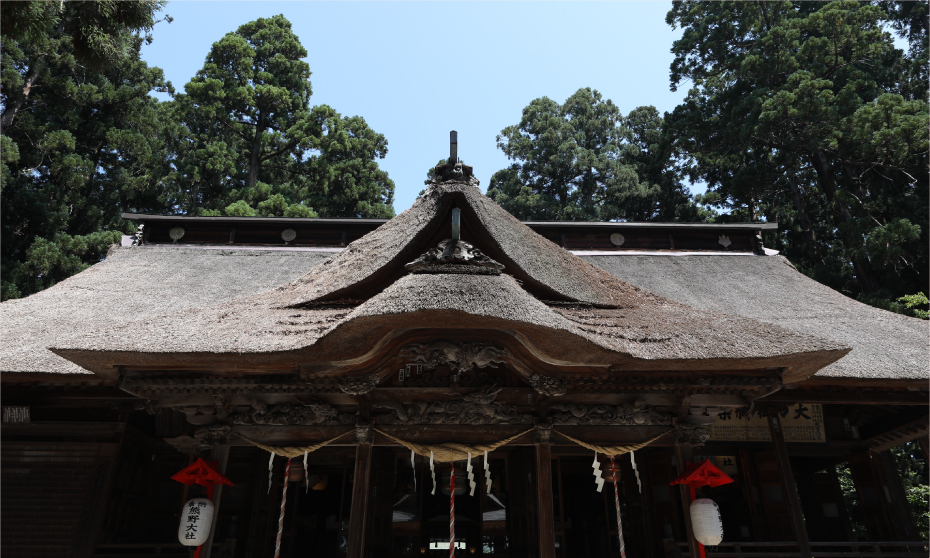History
One of Japan’s Three Kumano, Kumano Taisha Shrine
It is said that Kumano Taisha Shrine was established by imperial edict of the Emperor Heisei in the year 806 AD. Receiving the benefits of later Emperors and Monk-emperors, the teachings of the four beliefs of the Tendai Sect, the Shingon Sect, Kumano Practice, and Shintoism were added, and it is venerated as a sacred place of Kumano Practice. Moreover, its magnificent hall has been designated a cultural asset for being the oldest thatched roof structure in the prefecture.

The Oldest Thatched Roof Structure in the Prefecture
On the occasion of the reconstruction of the thatched roof which took place in celebration of the shrine’s 1200 year history, an indian ink document from 1787 was discovered that showed it was constructed before that year. Research shows that the main wooden materials used in the construction of that time date well before 1787. The style of thatching grass for the cusps and bargeboards is a type of construction unique to Yamagata Prefecture, and can be seen in the shrine structures of Dewa Sanzan. Of all these, the main hall of Kumanotaisha Shrine is the oldest.

The Faith of Generations of Uesugi and Date Military Commanders
In 1601, Uesugi Kagakatsu’s domain of Yonezawa was reduced to 30,000 bushels of rice.
Three years later, in May of 1604 the great retainer Naoe Kanetsugu undertook the reconstruction of Kumano Taisha Shrine. The historical document of this shrine, “Issankokinnikki”, relates how there were signs of Naoe Kanetsugu and Date Masamune placed together commemorating the construction. It must be said that is fantastic fate that these two military leaders opposed to each other in the torrents of history appear in the story of Kumano Taisha Shrine. Even now, Date Masamune’s andojo (letter of guarantee) is preserved in the shrine.

